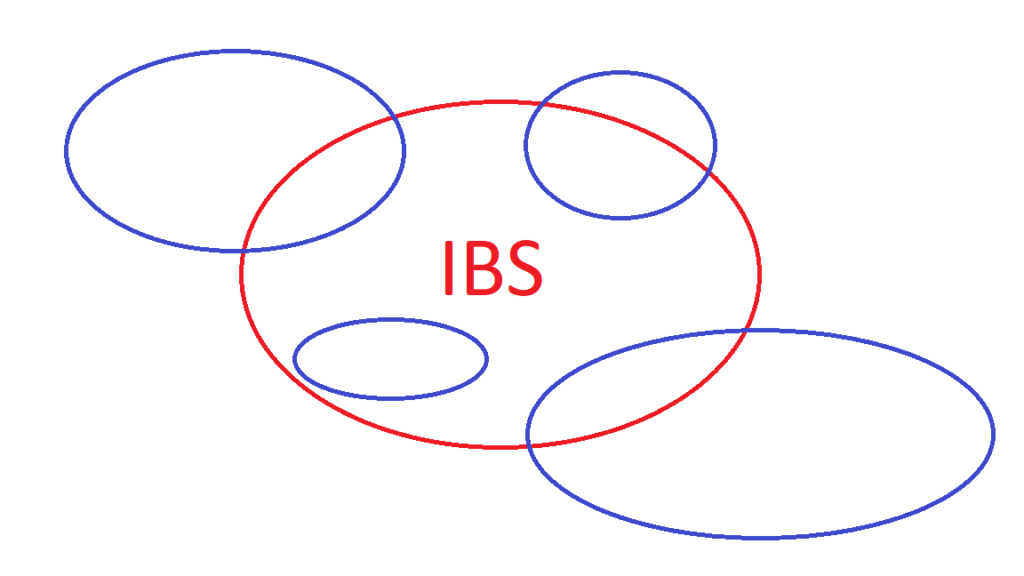The traditional approach to IBS is to observe symptoms and seek an explanation for each symptom. Treatment is targeted at symptomatic relief, e.g. loperamide for diarrhoea, mebeverine hydrochloride to reduce spasm. More recently reducing FODMAPs in our diet has been found to be helpful:
While treatments that help cope with IBS symptoms are welcome, we need to find the underlying causes and addressed them. Instead of trying to understand IBS from individual characteristics, we can take an abstract approach, akin to mathematical abstraction. Although each patient is different, they have signs and symptoms in common.
Our ambition is to find the fundamental characteristics that are necessary and sufficient to describe IBS. ‘Necessary and sufficient‘ is sometimes expressed as ‘if and only if‘. If causes are present an effect will follow and this effect will only follow if these causes are present.
In the field of medicine, we are unlikely to achieve this level of mathematical precision but we can attempt to find ‘necessary and sufficient‘ conditions that best fit most cases of IBS. This will facilitate two objectives: –
- We will be able to identify the essential characteristics of IBS enabling better diagnosis and be able to recognise IBS, even if IBS is a subset of other disorders.
- We can isolate signs and symptoms that are not due to IBS and use these to aid diagnosis of the underlying conditions that lead to IBS.

IBS signs and symptoms include: –
- Altered bowel habit: constipation, diarrhoea, or both.
- Abdominal pain.
- Sensation of bloating.
- Straining to defecate, producing ‘ribbon stools’.
- A feeling of incomplete evacuation.
- Relief after a bowel movement.
These signs and symptoms can be derived from two fundamental anomalies in IBS: –
- The gut contracts abnormally.
- Normal gut stimuli are painful (visceral hyperalgesia).

A simplified picture of how abnormal gut contraction and hyperalgesia influence the signs and symptoms of IBS. For example, spasm (contraction) of the gut and hypersensitivity to pain combine to produce a distended abdomen and sensation of bloating. The full picture is more complex with the effects of interactions between abnormal contraction and hyperalgesia. e.g. hyperalgesia may cause the gut to respond to sensations that are not normally detected and so disrupt peristalsis causing constipation, diarrhoea or both.
In the next section we show that abnormal gut contraction is part of a more generalised Abnormal Smooth Muscle Contraction.
